2024 Virtual Care Trends Revealed [Infographic]

2023 was a transformative year for virtual care, marked by a resurgence in merger and acquisition activity from non-traditional players, the continued adoption of virtual-first care by consumers, and the expansion of telehealth into specialty care.
As we begin 2024, it’s exciting to recap the lessons learned from 2023 and imagine the year ahead in the rapidly evolving virtual health landscape.
In this article and accompanying infographic we will:
- Dig into findings from our independent Consumerization of Care patient survey
- Reveal internal data trends from 2023 based on 1 million patient visits
- And highlight predictions for what’s in store in 2024 in virtual care.
For more insights, check out our free on-demand webinar!
Watch Here: 2024 Virtual Care Trends Revealed from Wheel and Amazon Clinic
2023 Look Back
Wheel highlights from 2023
2023 was a fascinating and important year in virtual healthcare.
Here at Wheel, we made a big move with our new care platform now in use nationwide. We also saw early and exciting signals of the scale and diversity to come in the market with some landmark new partnerships, Amazon Clinic and Best Buy.
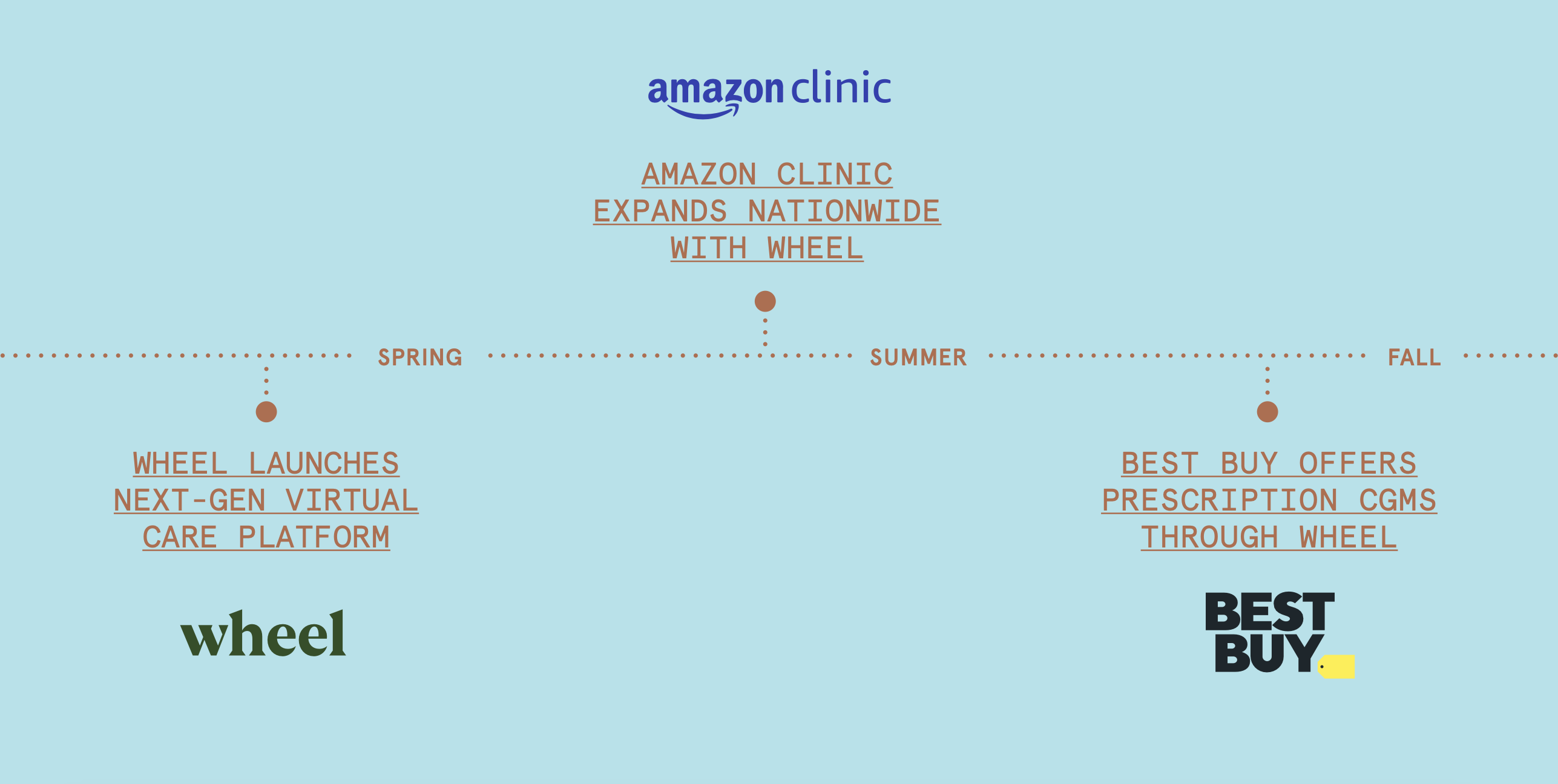
Data Insights from 1 Million Patient Visits
How popular is virtual care?
Virtual care has continued to rise in popularity, evidenced by the over 1 million consults facilitated by Wheel across all 50 states in 2023.
An independent Wheel-sponsored study also found that 89% of virtual care patients express a desire to continue using these services.

This widespread adoption and satisfaction underscore virtual care's role in reshaping how individuals access and experience healthcare, solidifying its place as a cornerstone of modern healthcare delivery.
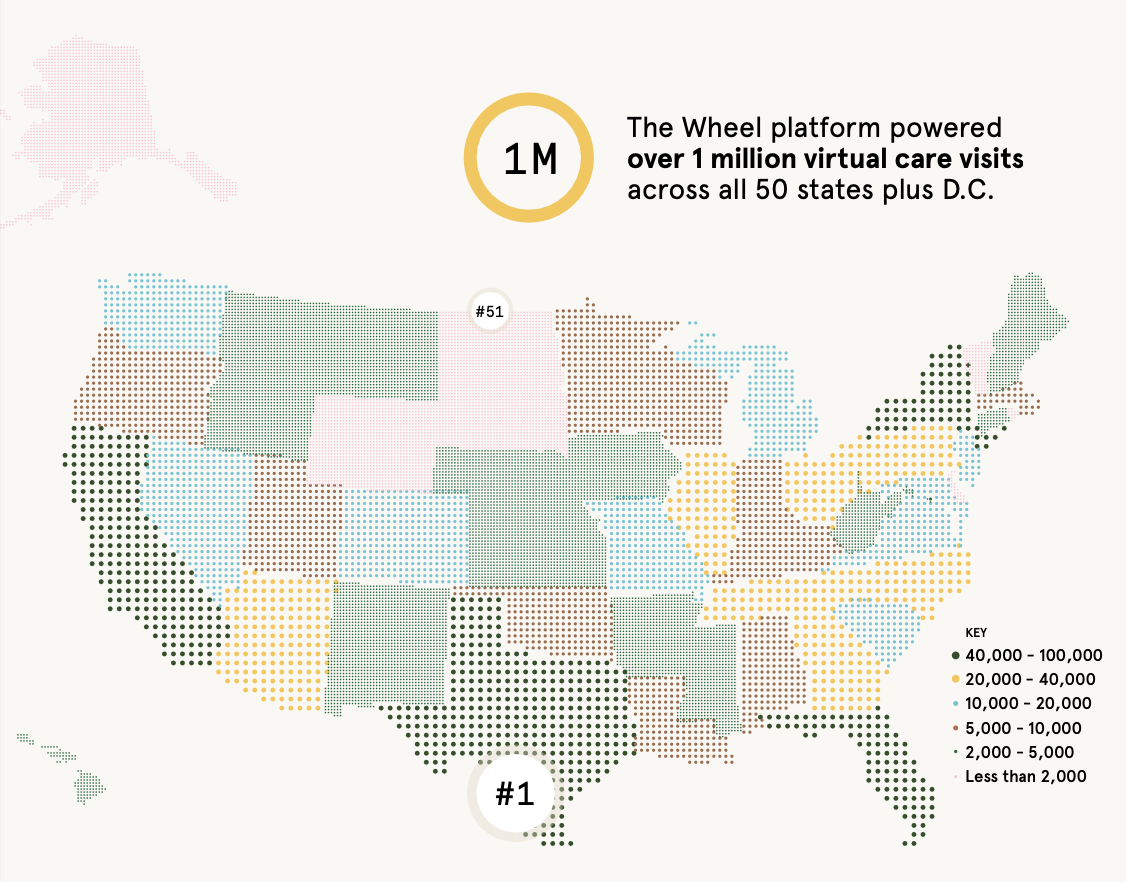
Who is using virtual care?
This data is based on patient visits on the Wheel platform. While patient usage demographics can be influenced by marketing campaigns, our year over year data follows industry trends showing growing usage by older Americans and certain male segments.


Discover more trends by generation in the full report >
What types of virtual care do people want?
While on-demand convenience care continues to be a popular use case for virtual care, visits for chronic condition management are on the rise, and primary care is emerging as a major market opportunity.

Asynchronous chat emerged as the preferred mode of communication among patients, showcasing a shift from traditional video visits.
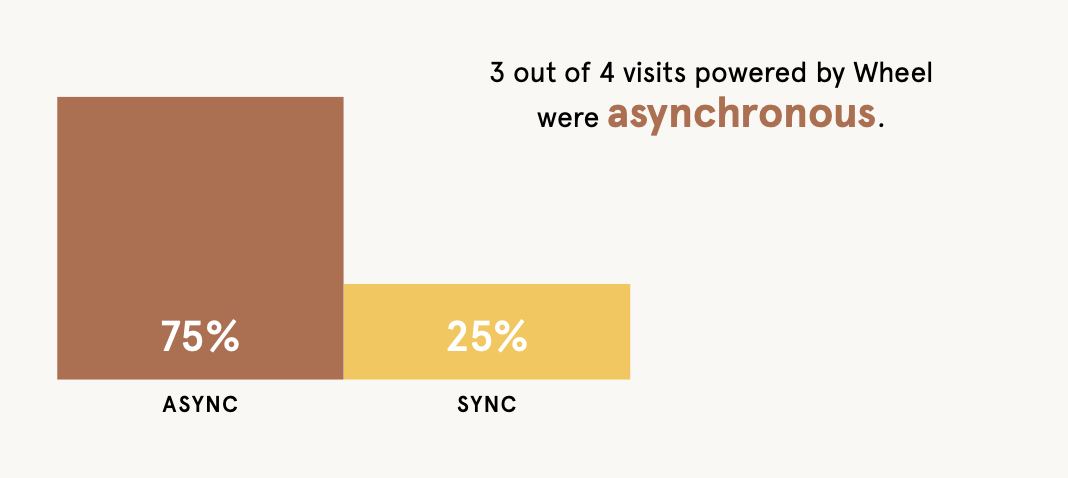
What factors may increase adoption?
Patients continue to value convenience factors in deciding whether to see a
healthcare provider virtually versus in-person, and are willing to pay more to do so.

In the world of virtual healthcare, patients prioritize convenience and speed, making services that cater to these needs more likely to succeed in the future.
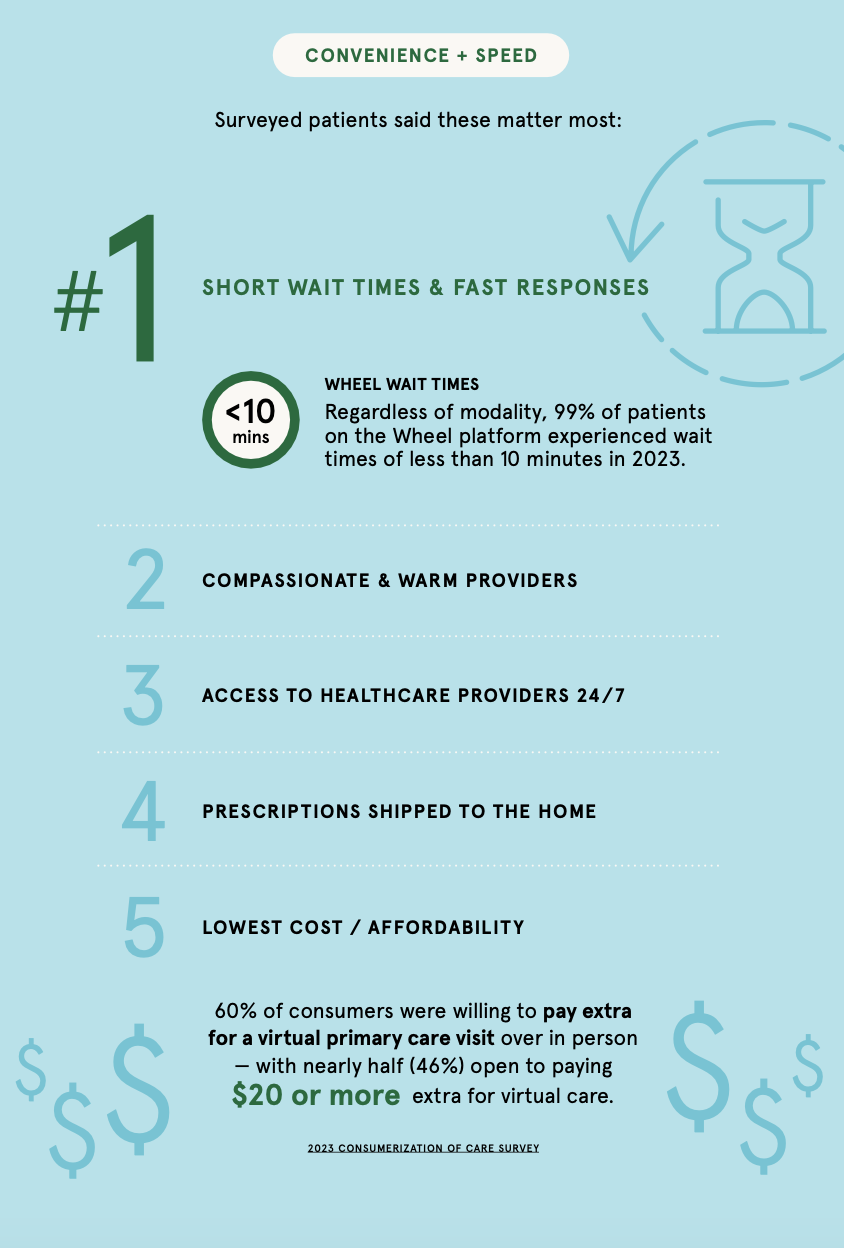
Where are people open to getting virtual care?
The definition of a healthcare company has expanded with virtual care. Our consumer survey results illustrate increasing trust in non-traditional care providers, especially in four categories.
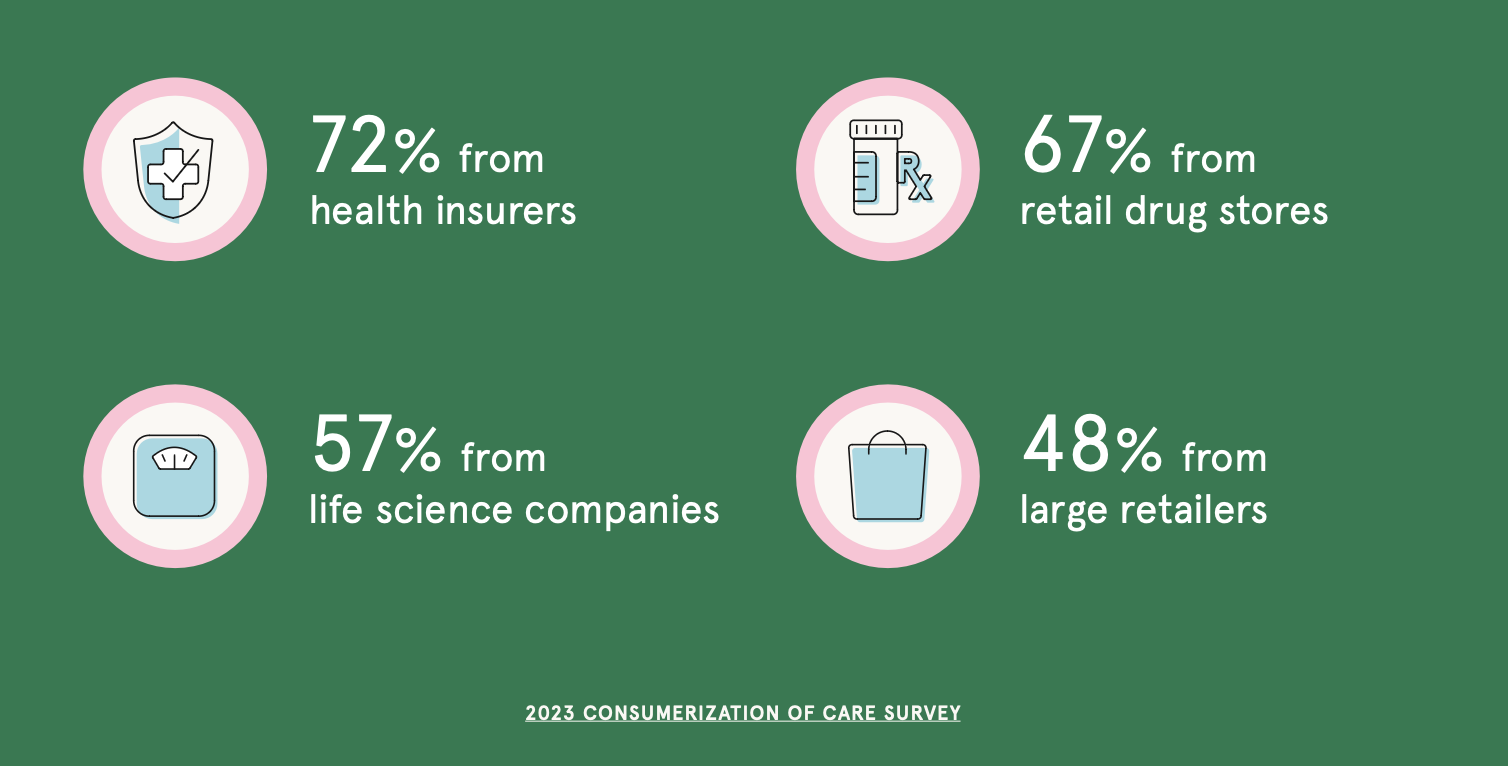
When do people use virtual care?
Mirroring interactions with other digital services like banking, transportation, and online shopping,
people have come to expect access to virtual care services on-demand, 24/7 and every day of the week.
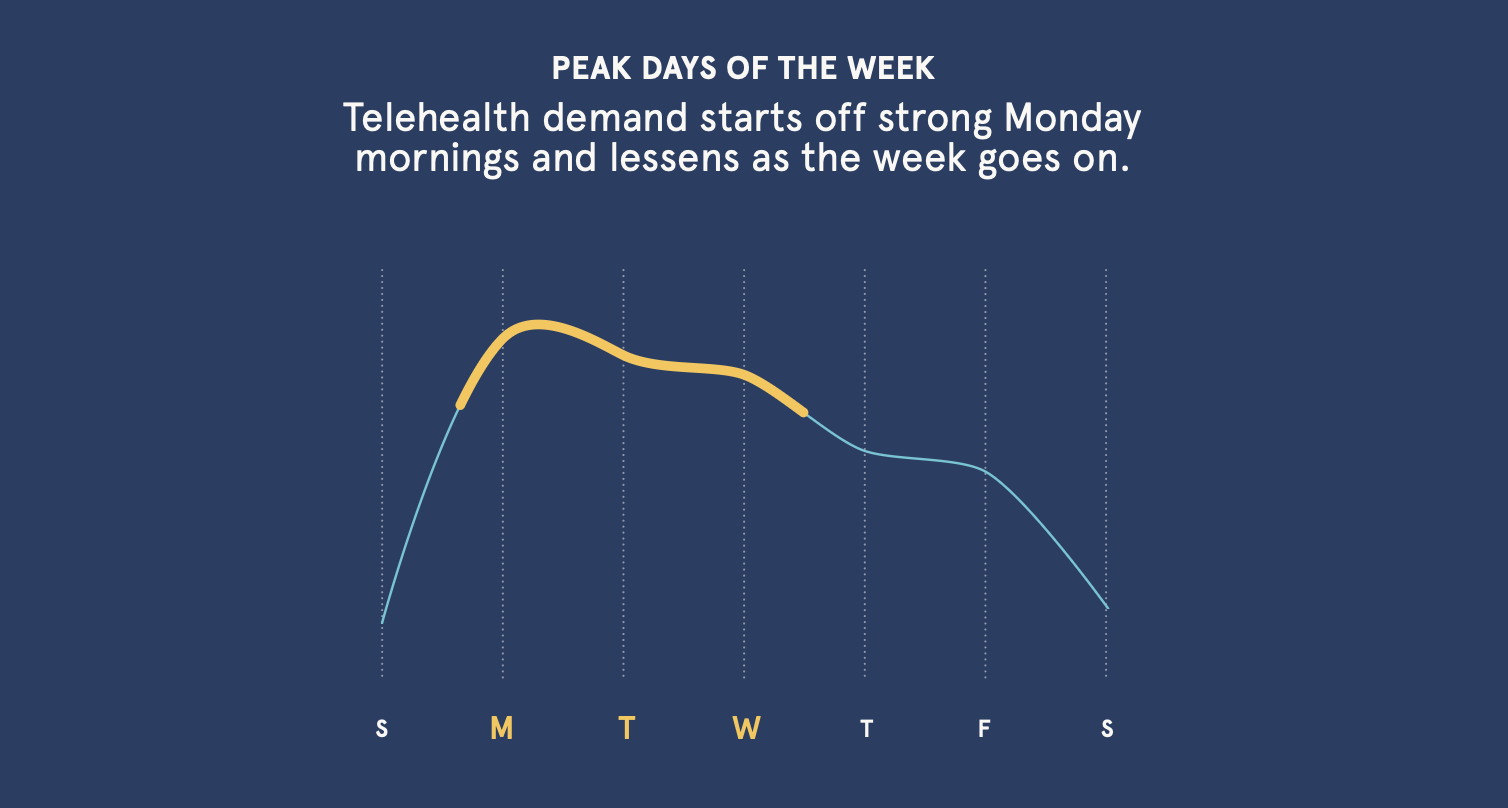
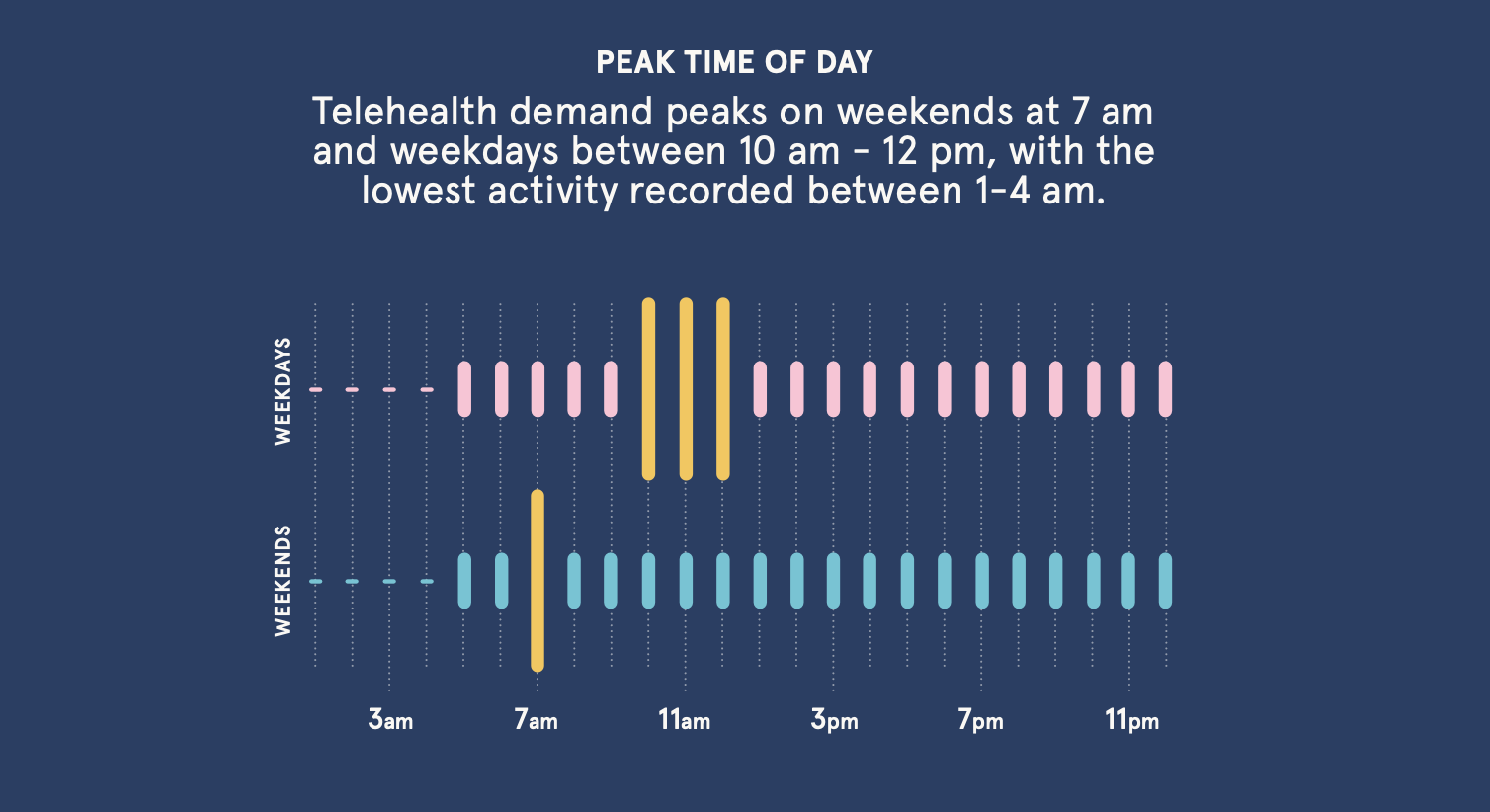
In 2023 we witnessed a notable shift as consumers took center stage, asserting their preferences and expectations in shaping the future of healthcare. This year wasn't just about technological advancements but a collective demand for accessible, personalized, and convenient healthcare experiences.
Looking back, it's evident that 2023 was the year when patients truly became the driving force behind virtual care.
4 Virtual Care Trends Shaping 2024
Wheel CEO Michelle Davey's inside look at how the virtual care industry will transform in 2024 and beyond...
1. Virtual care is more than just telehealth
To unlock next-generation healthcare, companies need solutions that enable an integrated digital experience. True virtual care integrates all clinical services — from telehealth, to diagnostics and devices, pharmacy, follow-up care, and referrals — for seamless care experiences.
2. Primary care and chronic condition management will virtually transform
Management for chronic conditions like obesity, diabetes, and hypertension will increasingly leverage at-home monitoring and virtual prescription management. And 64% of consumers would prefer to see their primary care provider virtually if they could.
3. Use of virtual care by older Americans will boom
We’ve seen a year over year trend of small but steady increases in virtual care utilization
by older Americans. Solutions built for aging demographics will come out winning.
4. After years of experimentation, non-traditional players are ready to win
Virtual care is no longer a playing ground for non-traditional players – Amazon, Best Buy, and others are moving from pilots to large scale programs positioned to dominate the market and compete with health systems.
Unpack More Insights in Our On-Demand Webinar
For more insights, check out our free on-demand webinar!Watch Here: 2024 Virtual Care Trends Revealed from Wheel and Amazon Clinic